

Exploring our past to sort out myth from reality
Share this Page on
Facebook or Twitter

These are the voyages of the TimeShip Anachron.
Our Mission: To boldly explore the past, dispelling
mythinformation and mythconceptions
of American History along the way.
 Visit us on Facebook
Visit us on Facebook
Meet MythAmerica Series

Pt 1 Pt 2 Pt 3 Pt 4 Pt 5 Pt 6 Pt 7
Walk 1000 Miles in My Moccasins, Part 5
The Nightmare Begins
Andrew Jackson had been elected as president in 1828. His Second Annual Message was delivered on December 6, 1830 to the U.S. Congress. It included these cheery comments:
It gives me pleasure to announce to Congress that the benevolent policy of the Government, steadily pursued for nearly thirty years, in relation to the removal of the Indians beyond the white settlements is approaching to a happy consummation. … What good man would prefer a country covered with forests and ranged by a few thousand savages to our extensive Republic, studded with cities, towns, and prosperous farms embellished with all the improvements which art can devise or industry execute, occupied by more than 12,000,000 happy people, and filled with all the blessings of liberty, civilization and religion?
Happy, happy, happy! Yes, you’d almost think Jackson was a pre-
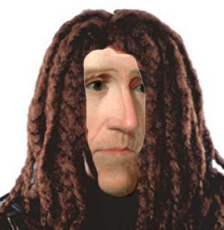
But by 1837, it was obvious that his characterization of “happy consummation” was a cruel hoax.
From the National Park Service Trail of Tears website:
For two years after the Treaty of New Echota, John Ross and the Cherokees continued to seek concessions from the federal government, which remained disorganized in its plans for removal. Only the eager settlers with their eyes on the Cherokee lands moved with determination.
Most Cherokee people seemed to be holding out hope that a new president in the White House might change their fortunes. But when Jackson’s vice president Martin Van Buren was voted in as the next president, it became obvious that he had no intention of making any changes in the plans set in motion by Jackson.

At the end of December 1837, the government warned the Cherokee that the clause in the Treaty of New Echota requiring that they should “remove to their new homes within two years from the ratification of the treaty” would be enforced.
Still they held out hope for a reprieve. For after all, weren’t there signs all over the country that many US citizens were deeply opposed to the Indian Removal plans, and were speaking out in their defense? One of the most eloquent such effort was a letter written to Van Buren by the 35-
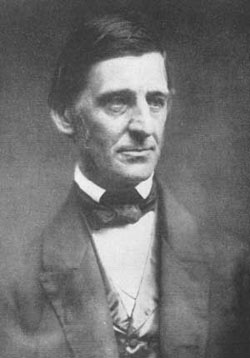
It was published as an “open letter” in newspapers in Washington, Concord MA, and elsewhere. Below are a few poignant excerpts. (I have added bolding to emphasize some wording.) You can read the whole letter at:
Ralph Waldo Emerson, Letter to Martin Van Buren President of the United States
Sir:
The seat you fill places you in a relation of credit and nearness to every citizen. By right and natural position, every citizen is your friend. Before any acts contrary to his own judgment or interest have repelled the affections of any man, each may look with trust and living anticipation to your government. Each has the highest right to call your attention to such subjects as are of a public nature, and properly belong to the chief magistrate; and the good magistrate will feel a joy in meeting such confidence. In this belief and at the instance of a few of my friends and neighbors, I crave of your patience a short hearing for their sentiments and my own: and the circumstances that my name will be utterly unknown to you will only give the fairer chance to your equitable construction of what I have to say.
Sir, my communication respects the sinister rumors that fill this part of the country concerning the Cherokee people. The interest always felt in the aboriginal population – an interest naturally growing as that decays – has been heightened in regard to this tribe. Even in our distant State some good rumor of their worth and civility has arrived. We have learned with joy their improvement in the social arts. We have read their newspapers. We have seen some of them in our schools and colleges. In common with the great body of the American people, we have witnessed with sympathy the painful labors of these red men to redeem their own race from the doom of eternal inferiority, and to borrow and domesticate in the tribe the arts and customs of the Caucasian race. …
The newspapers now inform us that, in December, 1835, a treaty contracting for the exchange of all the Cherokee territory was pretended to be made by an agent on the part of the United States with some persons appearing on the part of the Cherokees; that the fact afterwards transpired that these deputies did by no means represent the will of the nation; and that, out of eighteen thousand souls composing the nation, fifteen thousand six hundred and sixty-
It now appears that the government of the United States choose to hold the Cherokees to this sham treaty, and are proceeding to execute the same. Almost the entire Cherokee Nation stand up and say, “This is not our act. Behold us. Here are we. Do not mistake that handful of deserters for us;” and the American President and the Cabinet, the Senate and the House of Representatives, neither hear these men nor see them, and are contracting to put this active nation into carts and boats, and to drag them over mountains and rivers to a wilderness at a vast distance beyond the Mississippi. As a paper purporting to be an army order fixes a month from this day as the hour for this doleful removal.
In the name of God, sir, we ask you if this be so. Do the newspapers rightly inform us? Man and women with pale and perplexed faces meet one another in the streets and churches here, and ask if this be so. We have inquired if this be a gross misrepresentation from the party opposed to the government and anxious to blacken it with the people. We have looked at the newspapers of different parties and find a horrid confirmation of the tale. …
Such a dereliction of all faith and virtue, such a denial of justice, and such deafness to screams for mercy were never heard of in times of peace and in the dealing of a nation with its own allies and wards, since the earth was made. Sir, does this government think that the people of the United States are become savage and mad? From their mind are the sentiments of love and a good nature wiped clean out? The soul of man, the justice, the mercy that is the heart in all men from Maine to Georgia, does abhor this business.
… We only state the fact that a crime is projected that confounds our understanding by its magnitude, a crime that really deprives us as well as the Cherokees of a country for how could we call the conspiracy that should crush these poor Indians our government, or the land that was cursed by their parting and dying imprecations our country, any more? You, sir, will bring down that renowned chair in which you sit into infamy if your seal is set to this instrument of perfidy; and the name of this nation, hitherto the sweet omen of religion and liberty, will stink to the world.
… Will the American government steal? Will it lie? Will it kill? – We ask triumphantly. Our counselors and old statesmen here say that ten years ago they would have staked their lives on the affirmation that the proposed Indian measures could not be executed; that the unanimous country would put them down. And now the steps of this crime follow each other so fast, at such fatally quick time, that the millions of virtuous citizens, whose agents the government are, have no place to interpose, and must shut their eyes until the last howl and wailing of these tormented villages and tribes shall afflict the ear of the world.
…I write thus, sir, to inform you of the state of mind these Indian tidings have awakened here, and to pray with one voice more that you, whose hands are strong with the delegated power of fifteen millions of men, will avert with that might the terrific injury which threatens the Cherokee tribe.
With great respect, sir, I am your fellow citizen,
Ralph Waldo Emerson
Van Buren was no more impressed with this letter than Jackson was with John Ross’s letter begging him to not recognize the New Echota Treaty. I’ve seen no evidence Van Buren ever bothered to reply to Emerson, either privately or through the press. And thus the denial of justice continued.
In May, President Van Buren sent Gen. Winfield Scott to get the job done. On May 10, 1838, General Scott issued the following proclamation:
Cherokees! The President of the United States has sent me, with a powerful army, to cause you, in obedience to the Treaty of 1835, to join that part of your people who are already established in prosperity, on the other side of the Mississippi. . . The full moon of May is already on the wane, and before another shall have passed away, every Cherokee man, woman and child . . . must be in motion to join their brethren in the far West.
From the NationalTOT.org website:
President Martin Van Buren ordered the implementation of the Treaty of New Echota in 1838, and U.S. Army troops under the command of Gen. Winfield Scott began rounding up the Cherokees and moving them into stockades in North Carolina, Georgia, Alabama, and Tennessee. Altogether 31 forts were constructed for this purpose – 13 in Georgia, 5 in North Carolina, 8 in Tennessee, and 5 in Alabama. All of the posts were near Cherokee towns, and they served only as temporary housing for the Cherokees.
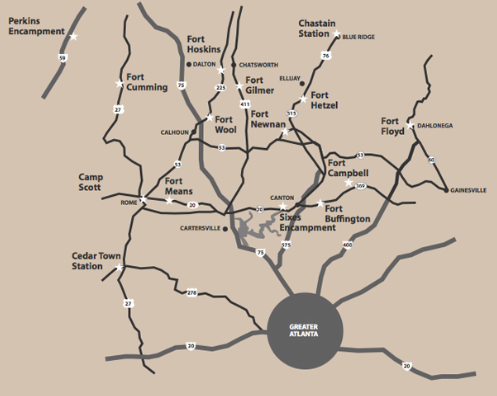
Georgia Removal Forts
As soon as practical, the Indians were transferred from the removal forts to 11 internment camps that were more centrally located – 10 in Tennessee and 1 in Alabama. In North Carolina, for example, Cherokees at the removal forts were sent to Fort Butler, and by the second week in July on to the principal agency at Fort Cass. By late July 1838, with the exception of the Oconaluftee Citizen Indians, the fugitives hiding in the mountains, and some scattered families, virtually all other Cherokees remaining in the East were in the internment camps.
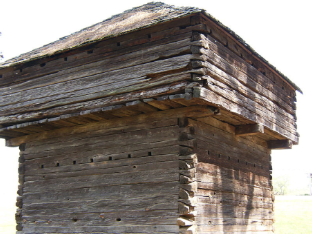
Fort Marr (near Benton TN, east of Chattanooga)
Built to protect the settlers from the Cherokee in 1814, Fort Marr is the only remaining portion of a Cherokee Removal Fort. This blockhouse, built in each corner of the standard removal fort featured gunports drilled every two feet or so. (Cherokee Forts)
By May, 1838, the fort housed one mounted company and two infantry companies under the command of Captain John Morrow. These troops were assigned the duty of collecting Cherokees from communities in the Tennessee mountains and the eastern edge of the Tennessee Valley, then transporting the Cherokee prisoners to the internment camps at Fort Cass where they would await deportation. (Fort Tours)
Federal troops and state militias began to move the Cherokees into stockades. In spite of warnings to troops to treat them kindly, the roundup proved harrowing. A missionary described what he found at one of the collection camps in June:
“The Cherokees are nearly all prisoners. They have been dragged from their houses, and encamped at the forts and military posts, all over the [Cherokee] nation. In Georgia, especially, multitudes were allowed no time to take any thing with them except the clothes they had on. Well-
…Under the orders of Gen. Winfield Scott, troops were stationed at various points throughout the Cherokee country, where stockade forts were erected for the purpose of coralling the Indians preparatory to removal. From these forts large squads of troops were sent out to search with rifle and bayonet every small cabin hidden away in the coves of the mountains and to make prisoners of all the occupants, however and wherever they might be found.
Families at dinner were startled by the sudden gleam of bayonets in the doorway and rose up to be driven with blows and oaths along the weary miles of travel leading to the stockades. Men were seized in the fields all along the roads. Women were taken from their [spinning] wheels, and children from their play. [Source]
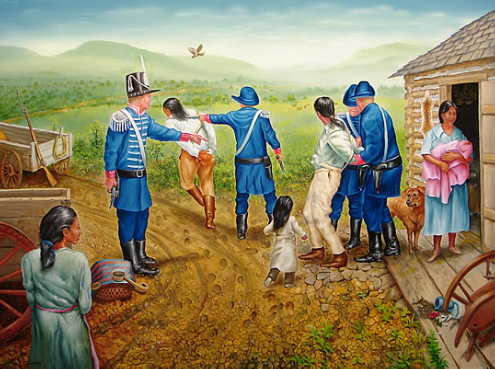
In many cases, as they turned for one last look as they crossed the ridge, they saw their homes in flames, fired by the lawless rabble that followed on the heels of the soldiers to loot and to pillage. So keen were these outlaws on the scent that in some instances they were driving off the cattle and other stock of the Indians almost before the soldiers had started their owners in the other direction. Systematic hunts were made by the same men for Indian graves to rob them of the silver pendants and other valuables deposited with the dead.
A Georgia volunteer, afterwards a colonel in the Confederate service, said: ‘I fought through the Civil War. It has been my experience to see men shot to pieces and slaughtered by thousands. But the Cherokees’ removal was the cruelest work I ever saw.’(Mooney 1975: 124)…
Conditions at the forts were horrible. Food intended for the tribe was sold to locals. What little the Cherokee had brought with them was stolen and sold. Living areas were filled with excrement. Birth rates among the Cherokee dropped to near zero during the months of captivity. Cherokee women and children were repeatedly raped. Soldiers forced their captives to perform acts of depravation so disgusting they cannot be told here. One member of the Guard would later write, “During the Civil War I watched as hundreds of men died, including my own brother, but none of that compares to what we did to the Cherokee Indians.”
Treaty Party members had prepared for removal and therefore saved much of their property, but those caught in the roundup often had no more than the clothes they wore when captured. In the stockades, the soldiers had built almost no shelters inside the 16-
Once the perfect storm of retribution against the Cherokees erupted, only the horrors that followed along the Trail of Tears exceeded the chaos that preceded it. When military rule was invoked by the United States government in 1838, troops herded more than 16,000 Cherokees into holding camps, stockades which were 200 by 500 feet with sixteen foot high walls and no shelter or provisions for sanitation. The occupants remained much longer than intended. Although the plan was to begin removal immediately and while some were removed, Cherokee leaders convinced General Scott that more tribesmen would survive if they waited until fall.
One of the most poignant accounts of their suffering during and after imprisonment was documented in the journal of a Baptist missionary, the Reverend Daniel S. Butrick. Unlike most of his fellow missionaries who had migrated to western Arkansas in 1836, Butrick determined to stay with his parishioners. He had been assigned to the Brainard Mission, now Chattanooga, in 1818, served in several others and, by 1838, was fully integrated into Cherokee society. Unlike most accounts of this tragedy which have been developed after-
Following are a few excerpts from May until September regarding their capture and confinement before the journey west began.
May 26 – “As the soldiers advanced towards a house, two little children fled in fright to the woods. The woman pleaded for permission to seek them, or wait until they came in……..but all entreaties were in vain….it was not till a day or two later after that, she would get permission for one of her friends to go back after the lost children.”
“A man, deaf and dumb, being surprised at the approach of armed men, attempted to make his escape, and because he did not hear and obey the command of his pursuers, was shot dead on the spot.”
“Women absent from their families on visits, or for other purposes, were seized, and men, far from their wives and children, were not allowed to return, and also children being forced from home, were dragged off among strangers.”
“And, it is said that the white inhabitants around, stood with open arms to seize whatever property they could put their hands on.”
“Those taken to the fort at New Echota, were confined day and night in the open air, with but little clothing to cover them, when lying on the naked ground.”
May 31 – “Astoundingly, a little before sunset, a company of about 200 Cherokees were driven into our lane. The day had been rainy, and of course all men, women and children were dripping wet with no change of clothing, and scarcely a blanket fit to cover them. As some of the women, taken from their houses, had on their poorest dress, this of course was the amount of clothing for a journey of about 800 miles.”
July 26 – “They were not allowed to stop or rest on account of sickness. They were driven on as long as they could walk, and then thrown into wagons. When some were perceived to be in the agonies of death, the wagon master ordered them to drive on!”…..”When it was known that one was dead, the lifeless body was left to the care of some stranger.”
August 20 – “ We also learned that when the last company was taken over the river at Ross’s Landing, a woman, in the pains of childbirth, stood and walked as long as possible, and then fell on the bank of the river. A soldier coming up, stabbed her with his bayonet, which, together with other pains, soon caused her death.”
These graphic excerpts do not include Butrick’s comments of absolute disbelief regarding the inhumane treatment and the immoral conduct condoned by the United States government.
And where did my recent hometown of Cedartown fit in all this?
In 1838, under the direction of President of the United States Andrew Jackson Indian Removal Act, a fortification was built on what is called “Furnace Field” for the purpose of forced internment of the Cherokee people, nearly three hundred Cherokee people were held in horrible and squalid conditions. Half starved and mistreated by their captors, disease was rampant, many of the old and young died, before the still living Cherokees, around two hundred, were then forcibly marched on foot down the Trail of Tears to Indian reservations in Oklahoma. [Source]
All of the Cherokees who once lived in the Cedar Town area were forced to abandon their homes, furniture, clothing, livestock, food, tools and agricultural fields. Like their white neighbors, they made their homes in log cabins with wood they had cut from the forests. Women kept vegetable gardens and helped men plant and harvest corn from the fields. They cooked in kitchens built behind their cabins and stored surplus food in corn cribs and potato houses. Nearly every Cherokee farm included an orchard of peach and apple trees. They raised pigs and chickens that they sometimes sold at local markets. Many local Cherokees owned horses and kept them in stables they built near their cabins. They used the abundant water in the Cedar Town area and constructed mills to grind corn into cornmeal. Leaving home against their will, the Cherokees had to give up almost everything they had built, raised, cultivated and cared for.
After they were rounded up, the 217 Cherokee prisoners in the Cedar Town Camp ate the same military rations two times a day. In Capt. Vincent’s company of 84 soldiers, each man cooked his own meal in a skillet over a camp fire and ate it from his mess pan. The army did not provide equipment for the Cherokees, who cooked with any container they had been able to gather up when they were arrested.
The supply wagon that arrived at the Camp in late May, 1838, brought enough rations for the soldiers and all the captive Cherokee men, women and children. There were barrels with bacon, hard bread, flour, coffee and sugar. Soldiers were given candles for light at night and soap to wash themselves and their gear, but the Cherokees had neither. The army provided each soldier with a canvas tent, but there were no tents for the Cherokees. The soldiers and their Cherokee prisoners lived side by side here at the Cedar Town Camp for more than two weeks.
All Cherokees were taken from the Cedar Town area in less than a month. In late June, Vincent’s company broke camp and mustered out of military service. No traces remained of the roundup of Cherokees from their homes around Cedar Town.
Yes, “no traces” remained, either on the ground or, evidently, in the memory of the area residents. Here’s a historical plaque that was installed at the spot (a few blocks from Sterling Holloway’s birth home, remember!) where the Cherokee internment camp had been, in Big Spring Park in Cedartown, erected some time after 1932.
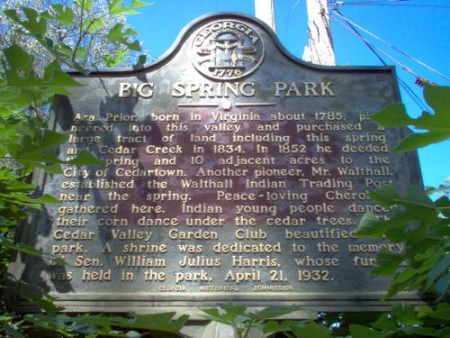
There is no mention in the inscription of the dark era of Cedartown history that occurred on the very spot. No, instead it reads: “Peace-
Happy, happy, happy.
The “removal camp” at Cedartown was at the farthest point south of any such camp or fort in Georgia’s Cherokee Territory. In essence, it was where the “first leg” of the Trail of Tears began.